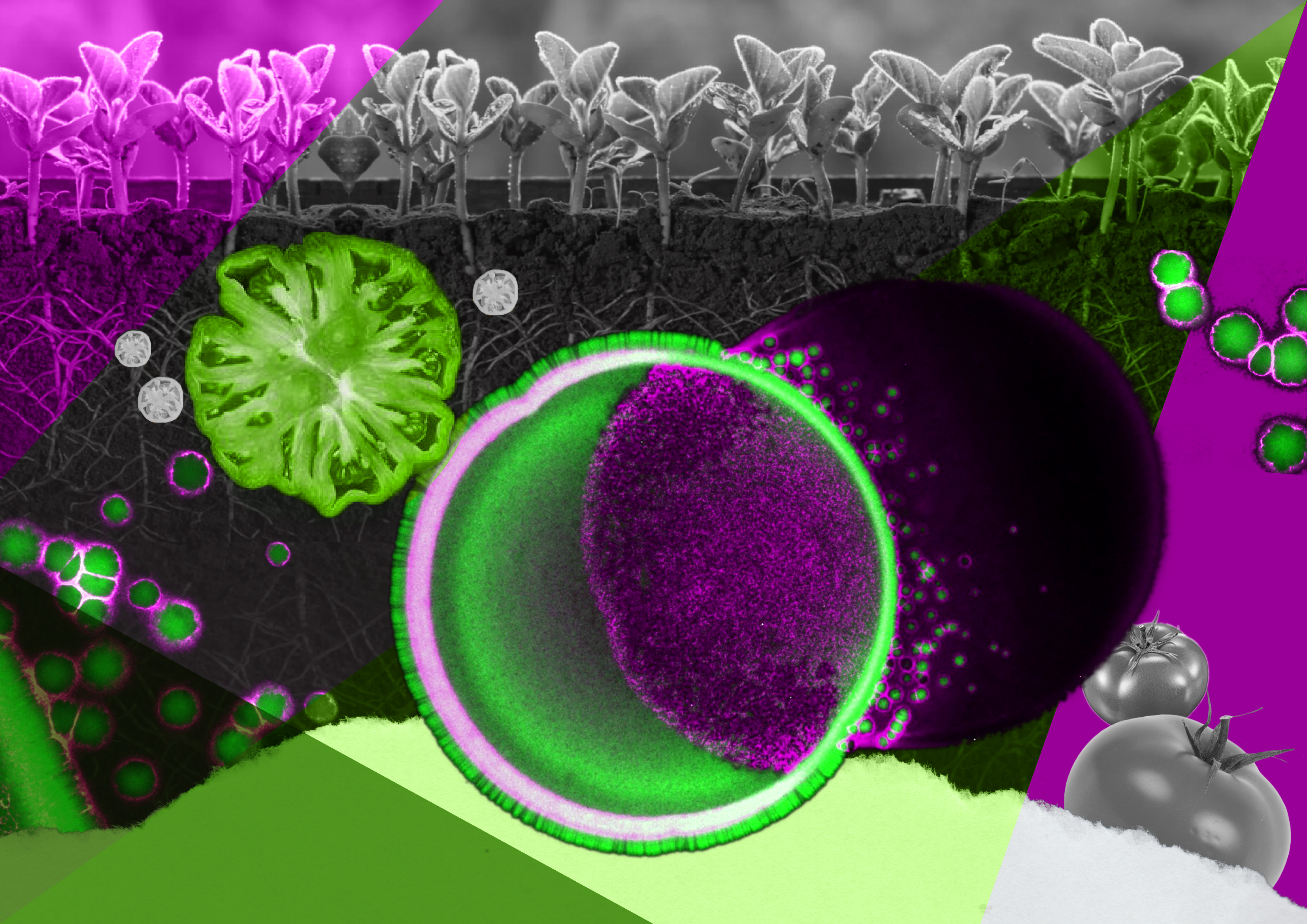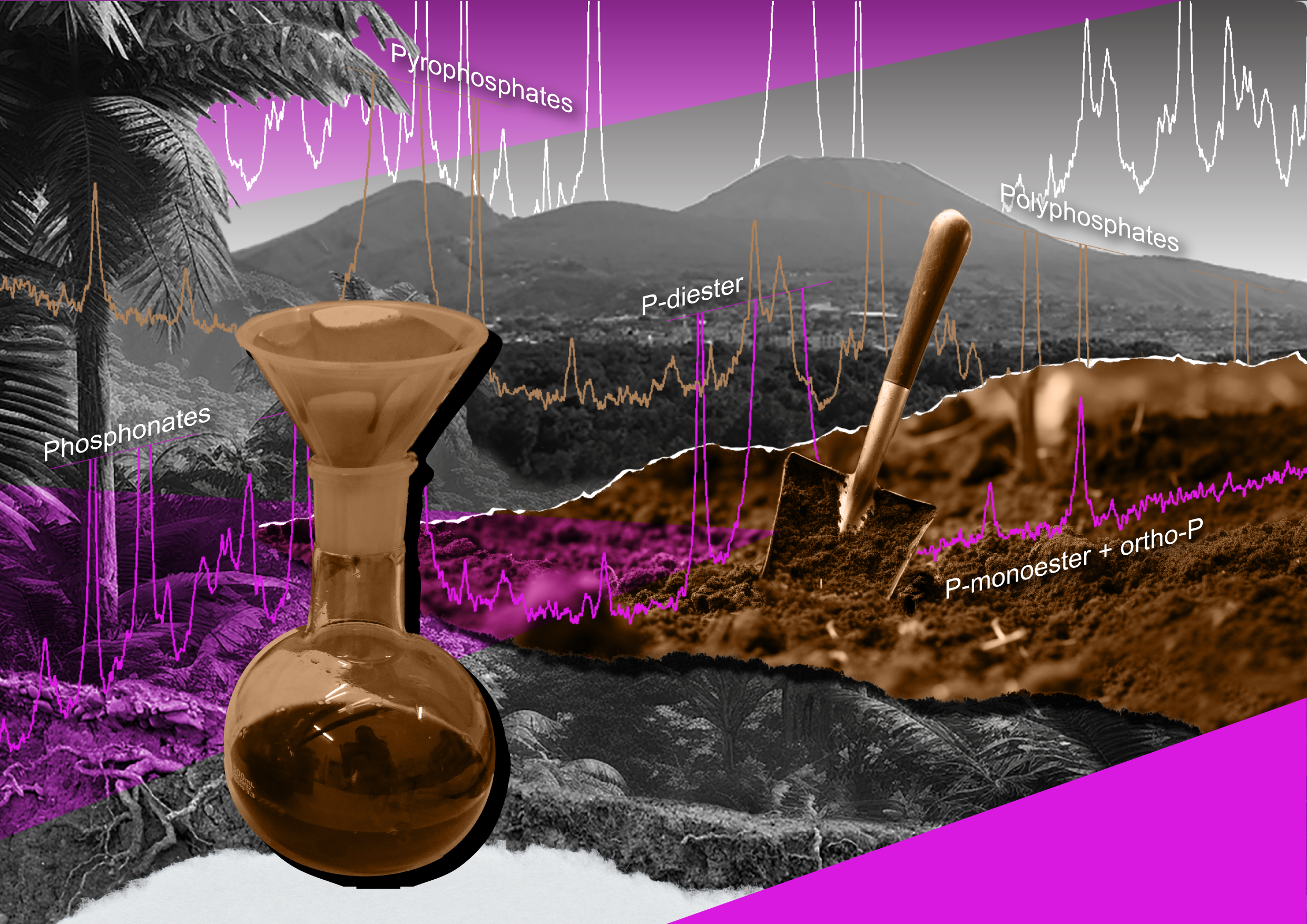Moments of Discovery

To celebrate of the 25th anniversary of the Zurich-Basel Plant Science Center we invited our members to share a Moment of Discovery with us. The talented young illustrator Gaia Codoni translated these “moments” into artistic compositions. At a time when technological developments are proceeding apace and global crises are presenting enormous challenges, the communication of scientific knowledge is increasingly important. Visualizations – such as art – capture our attention, encourage ivolvement and enhance understanding of the relevance of plant sciences.
Moments of Discovery – Art and Science Exhibition of the Zurich-Basel Plant Science Center (2023). Manuela Dahinden (ed.) Zurich-Basel Plant Science Center, Zurich. https://doi.org/10.3929/ethz-b-000645001
Contributors: Jake M. Alexander, Célia Baroux, Jordi Bascompte, Rodrigo Cámara-Leret, Gaia Codoni, Sebastian Doetterl, Leo Eberl, Emmanuel Frossard, Janneke Hille Ris Lambers, Ansgar Kahmen, Gabriela Purtschert-Montenegro, Daniel B. Nelson, Patrícia dos Santos, Florian P. Schiestl, Bruno Studer, Peng-Juan Zu, Jolanda E. Reusser, Jurriaan M. de Vos.
UZH News used five examples to show how plant science affects our lives. See: UZH News (7.12.2023, in German) and UZH News (11.12.2023, in English).
01 Biocontrol
Facilitating biofilm invasion
Microbial inoculants have great potential for biofertilisation and biocontrol applications, as they can improve plant growth and health. However, the microorganisms applied are often unable to persist in the environment or are rapidly outcompeted. One key reason for why a bio-inoculant may fail to colonise a desired niche is that planktonic microorganisms normally cannot invade and prevail within indigenous surface-associated communities known as biofilms. Now, a research group led by Leo Eberl has shown that the plant root coloniser Pseudomonas putida strain IsoF is able to invade these existing biofilms. IsoF not only antagonises several economically relevant phytopathogens in the laboratory but can also specifically protect tomato plants against the pathogen R. solanacearum. The outcome of this new research will encourage the application of bioinoculants and so help farmers to adopt sustainable and environmentally friendly farming practices.
02 Biodiversity
Various kinds of knowledge
Biodiversity is multidimensional – as is the knowledge about it. Different people attribute different meanings and levels of importance to it. Indigenous communities have accumulated a sophisticated knowledge about plants, their services and the health benefits they confer. This knowledge, however, is increasingly threatened by language loss and the extinction of various species. Rodrigo Cámara-Leret and Jordi Bascompte found that the majority of indigenous knowledge about the medicinal value of plants was unique to a single language, and that those languages with a high proportion of unique medicinal knowledge were among the most endangered ones. Through their research, Rodrigo and Jordi aim to raise global awareness of the endangerment of indigenous languages and their importance for sustainable development. The multiple values of biodiversity, and the many groups that value it highly, such as local traditional and indigenous communities, need to be better incorporated in global framings of biodiversity conservation.
03 Plasticity
Rapid plant evolution driven by herbivory
In plants, survival strategies and reproduction are interlinked. Herbivory and soil type are well known to induce changes in plant morphology (e.g. floral colour and size) and volatile emission. These signals are key in determining whether a pollinator will alight on a flower or avoid it. Florian Schiestl and his research group used Brassica rapa plants to study the effect of herbivore-induced changes (in phenotypes) and soil type on selection by bumblebees. They detected strong plasticity in morphology, nectar, and floral scent in response to different soil types, and this resulted in changes in bee visits. For plants growing in richer soil, selection was stronger in the absence of herbivores, whereas for plants growing in poorer soil, selection was stronger with herbivory. The documented variability in the fitness effects on Brassica reflect its high plasticity to stressful environments and the quick adaptive response of this species, leading to the evolution of resistance.
04 Climate change
Phenological shifts in wildflower blooming
Some of the most sensitive ecological responses to climate change are phenological shifts. For example, alpine wildflowers that shift their flowering too early may be exposed to damaging frosts or then be out of timing with important pollinators. The research group led by Janneke Hille Ris Lambers investigated the effects of phenological shifts on visitor experiences. Citizen science projects deploying 500 volunteers were carried out in subalpine meadows on Mount Rainier. They showed that as temperatures warm, peak visitor activity in the National Park is likely to become increasingly mismatched with the peak wildflower season, meaning that a lower proportion of park visitors will experience this seasonal phenomenon. Janneke analysed data mined from social media platforms – an emerging field of conservation science. Understanding people’s preferences and biodiversity-related experiences is essential for informing conservation management. Ecotourism potentially plays a key role in generating political support for protected areas.
05 Evolution
The ecological function of plant growth forms
Adaptive radiation is a significant driver of biodiversity. The rapid increase in the number of species with a common ancestor is characterised by great morphological diversity linked to the environmental conditions and the various habitats they occupy. The research group led by Jurriaan de Vos studies Aeonium (Crassulaceae), a rosette-forming succulent genus with several growth forms on the Canary Islands, which are known for their immense climatic variability. They found that growth forms dictate adaptations to the local environment. Furthermore, the response of specific traits to analogous environments is antagonistic when growth forms are different. For instance, during summer drought, leaf size decreases in shrubs but increases in rosette plants. This discovery sheds fundamental light on how adaptive radiation works: by evolving one aspect (e.g. growth form), other aspects suddenly evolve differently across the same selective gradient, creating a stunning array of plant diversity.
06 Networks
Decoding ecological information flows
To survive, plants must sense and respond to information from their environment, and it is this process that behavioural ecology seeks to understand. The latest methods in data sciences allow scientists to combine empirical and theoretical work to gain a better understanding of information flow and interdependencies in ecological networks. The research group led by Pengjuan Zu studies plant-insect chemical communication in ecological communities such as tropical dry forest and alpine grassland. Using information theory, they quantify all kinds of signals and thus design multilayer functional maps. These signals include colours and chemicals (from flowers and leaves), different sets of partners and trophic levels (pollinators, herbivores and parasitoid insects), and even different information forms (visual, vocal). Their research is giving fresh insights into how ecosystems work. For example, by detecting patterns of coevolution, we can build models for forecasting ecosystem functioning and restoration.
07 Resilience
Linker histones as chromatin architects
Plants utilise highly evolved mechanisms to improve their growth and development. The research group led by Célia Baroux studies the role of chromatin architecture in responses to abiotic stress in Arabidopsis. They were surprised to see that histones – ancient, evolutionary conserved proteins – are in fact dispensable for plant growth, although their absence massively disorganises genome organisation. In fact, the subtle phenotypes affecting developmental and cellular transitions lead them to hypothesise that the linker histones H1 help transcriptional reprogramming in environmental or developmental adaptations in plants, just as degrip oil for bike chains allows us to change gears smoothly. H1 helps to compartmentalise the genome in either highly compact, silent domains or in less compact domains accessible to the transcription, replication and repair machineries. Such research on stress-induced changes in chromatin structure helps to design more resilient crops – through a method called plant priming.
08 Ecosystem
Isotope analysis and environmental change
Isotopes provide unique insights into physiological processes and interactions between plants and the environment. The isotopic composition varies among different kinds of plants and among plants growing in different environments. In plants, the most commonly used elements for stable isotope analysis are carbon (δ13C), nitrogen (δ15N), hydrogen (δ2H) and oxygen (δ18O). The research group led by Ansgar Kahmen develops new analytical tools to identify changes in the carbon metabolism of plants. The isotope analysis of different starch mutants revealed that plant carbon metabolism impacts organic compound hydrogen isotope composition (δ2H). Hydrogen values of plant organic compounds reflect the balance of autotrophic and heterotrophic processes in plants (e.g. plant growth and senescence). Their research provides a powerful new proxy for investigations into plant and ecosystem carbon cycling.
09 Nutrition
Phosphorus availability in humus
Phosphorus (P) is an essential nutrient for plant growth and development. It is found in organic and inorganic forms in the soil, where the composition of the organic matter (humus) is key in making P more available for uptake by plant roots. Recently, the research group led by Emmanuel Frossard were able to decipher the chemical nature of organic phosphates compounds associated with soil organic matter. Their experiment, carried out in Naples in Italy, revealed that not only does the total content of P associated with soil organic matter vary between different soil pools, but so does the composition of P, including an array of chemical species and bonding types, such as phosphomonoesters and phosphodiesters. Drawing on this knowledge of the chemical structure and dynamics of P in humus, novel concepts of both humification and mineralisation can be developed to help increase soil fertility and the yield and quality of crops.
10 Soil health
Protecting intact plant-soil interactions in the Tropics
Loss of forests driven by cropland expansion and deforestation for timber, agriculture or charcoal production is a global problem with great consequences for terrestrial carbon (C) cycling. The research group led by Sebastion Doetterl found that soil fertility parameters have a huge effect on carbon allocation, stocks, and dynamics in forests. The reason for this is that plant carbon inputs must be stabilised by minerals through organo-mineral associations – and those are often weak in deeply weathered tropical soils. Consequently, tropical soils do not provide enough reactive minerals to stabilise C input. This is critical, since many ideas involving reforestation to create carbon sinks in the global south rely on soils to sequester and stabilise those carbon inputs. An understanding of the effects of forest management practices on soil C stocks can help to guide efforts and identify regions where reforestation and the protection of intact plant-soil systems in the Tropics are most efficient.
11 Reproduction
Unravelling self-incompatibility in grasses
The grass family comprises not only key food sources such as rice, wheat or maize, but also all the forage grasses used for roughage-based livestock production. However, breeding of forage grasses is difficult by nature – for like many other flowering plants, forage grasses cannot reproduce by self-pollination. This self- incompatibility ensures that no pollen from the plant itself or from closely related individuals can grow towards the ovary and fertilise the egg cell. The research group led by Bruno Studer has now identified the genes responsible for self-incompatibility in grasses. This breakthrough is yielding insights to the origin of this mechanism and opening up new possibilities for breeding. Self-incompatibility is based on the interplay of two loci – the S and the Z locus – which are located on different chromosomes. It is possible that in the evolutionary history of grasses, one locus duplicated, and the copy diversified while maintaining its function.
12 Competition
Causes of limits in species distribution
Climate and biotic interactions, in particular competition, are key factors constraining the geographic ranges of species. The research group led by Jake Alexander conducted a field experiment to explore the effects of competition on plants originating from low and high elevations across an elevation gradient in the Swiss Alps. Thousands of individual plants were grown at three different elevations and tracked over three years to quantify coexistence determinants (i.e. differences in niche and relative fitness). The researchers discovered that both lowland and highland species persist better in the presence of competition within, rather than beyond, their elevation ranges. One possible explanation could be temporal overlap in phenology. Competition therefore contributes to setting plant range limits not only at low elevation, as commonly assumed, but also at high elevation. Consequently, interactions with competitors are expected to influence the ability of plants to shift their distributions to high elevations as the climate continues to warm.











